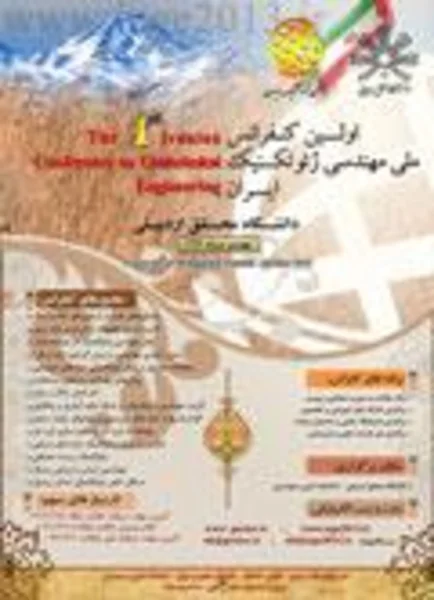-
identification and management of dispersive soils
جزئیات بیشتر مقاله- تاریخ ارائه: 1392/07/24
- تاریخ انتشار در تی پی بین: 1392/07/24
- تعداد بازدید: 730
- تعداد پرسش و پاسخ ها: 0
- شماره تماس دبیرخانه رویداد: -
dispersive clay soils collapse or disperse to form dissolved slurry when in contact with water. these soils are highly prone to erosion often leading to tunnel and gully erosion. unlike other forms of erosion, dispersion and tunnel erosion result from an imbalance in soil chemistry. dispersion of soil occurs when it is wetted and the clay particles are forced apart. thus dispersive soils erode under small seepage velocity leading to problems of stability of earth and earth retaining structures. the extent of dispersion depends on mineralogy and clay chemistry as well as the dissolved salts of the pore fluid. soil dispersivity is mainly due to the presence of exchangeable sodium present in the structure. the attractive forces are less than the repulsive forces under saturated conditions and this will help the particle to segregate and to move in suspension. many structures are built, on and through clay soils, because of their low permeability. in the past dispersive clay soils were not recognized, and failure of several structures occurred before dispersive action was identified. this article presents description of characteristics and problems of dispersive clay soils, tests for identifying and approaches for minimizing erosion risk in dispersive soil.
مقالات جدیدترین رویدادها
-
استفاده از تحلیل اهمیت-عملکرد در ارائه الگوی مدیریت خلاقیت سازمانی و ارائه راهکار جهت بهبود
-
بررسی تاثیر ارزش وجوه نقد مازاد بر ساختار سرمایه شرکت های پذیرفته شده در بورس اوراق بهادار تهران
-
بررسی تأثیر سطح افشای ریسک بر قرارداد بدهی شرکت های پذیرفته شده در بورس اوراق بهادار تهران
-
بررسی تأثیر رتبه بندی اعتباری مبتنی بر مدل امتیاز بازار نوظهور بر نقد شوندگی سهام با تأکید بر خصوصی سازی شرکت ها
-
تأثیر آمیخته بازاریابی پوشاک ایرانی بر تصویر ذهنی مشتری پوشاک ایرانی (هاکوپیان)
-
اثربخشی مشاوره گروهی مبتنی بر طرح واره درمانی بر طرح واره های ناسازگار اولیه
-
تحلیل محتوای کتاب ریاضی سوم دبستان بر مبنای الگوی خلاقیت پلسک
-
a simple constitutive model of soilstructure interface using soil plasticity
-
multiple solutions of an even-order nonlinear problem with convex–concave nonlinearity
-
the effects of the welding current on heat input, nugget geometry, and the mechanical and fractural properties of resistance spot welding on mg/al dissimilar materials
مقالات جدیدترین ژورنال ها
-
مدیریت و بررسی افسردگی دانش آموزان دختر مقطع متوسطه دوم در دروان کرونا در شهرستان دزفول
-
مدیریت و بررسی خرد سیاسی در اندیشه ی فردوسی در ادب ایران
-
واکاوی و مدیریت توصیفی قلمدان(جاکلیدی)ضریح در موزه آستان قدس رضوی
-
بررسی تاثیر خلاقیت، دانش و انگیزه کارکنان بر پیشنهادات نوآورانه کارکنان ( مورد مطالعه: هتل های 3 و 4 ستاره استان کرمان)
-
بررسی تاثیر کیفیت سیستم های اطلاعاتی بر تصمیم گیری موفق در شرکتهای تولیدی استان اصفهان (مورد مطالعه: مدیران شرکتهای تولیدی استان اصفهان)
-
عفو و توبه به عنوان آسیب های وارد بر قطعیت اجرای کیفر در نظام حقوقی ایران
-
بررسی روش های تدریس سنتی و مدرن و تاثیر آن در یادگیری دانشجویان پیام نور اصفهان
-
تفسیر و تعدیل قراردادهای نفتی در عرصه بین الملل
-
green envelop impact on reducing air temperature and enhancing outdoor thermal comfort in arid climates
-
application of value engineering in the design and implementation of dam channel and storage pump power plant (case study of siah bishe project)




سوال خود را در مورد این مقاله مطرح نمایید :